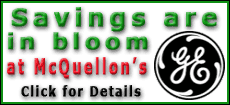 The Commerce Department's updated reading on gross domestic product, released Friday, showed the economy's contraction from January to March was slightly less deep than the 6.1 percent annualized decline first estimated last month. But the new reading was a tad worse than the 5.5 percent annualized drop economists were forecasting.
The Commerce Department's updated reading on gross domestic product, released Friday, showed the economy's contraction from January to March was slightly less deep than the 6.1 percent annualized decline first estimated last month. But the new reading was a tad worse than the 5.5 percent annualized drop economists were forecasting.
It was a grim first-quarter performance despite the small upgrade. It marked the second straight quarter where the economy took a huge tumble. At the end of last year, the economy shrank at a staggering 6.3 percent pace, the most in a quarter-century.

Economists are hopeful that the economy isn't shrinking nearly as much in the April-to-June quarter as the recession eases its grip. Forecasters at the National Association for Business Economics, or NABE, predict the economy will contract at a 1.8 percent pace.
Other analysts think the economic decline could be steeper - around a 3 percent pace. Some think it could be less
- about a 1 percent pace.
"Things are getting less awful," said Bill Cheney, chief economist at John Hancock Financial Services.
Less dramatic cuts by businesses factor into the expected improvement. Consumers, however, are likely to be cautious. There's been encouraging signs recently with gains in orders for big-ticket manufactured goods, some firming in home sales and a slowing in the pace of layoffs.
"The speed of the drop will slow," predicted Ian Shepherdson, chief U.S. economist at High Frequency Economics.
On Wall Street, a late-day rally gave stocks a lift. The Dow Jones industrial average gained 96.53 points to close at 8,500.33.

The economy's dismal performance over the last two quarters underscored the toll the recession, which started in December 2007 and is now the longest since World War II, has had on the country. Businesses have ratcheted back spending and slashed 5.7 million jobs to survive the fallout. Financial firms have taken huge losses on soured mortgage investments. Banks and other companies have been forced out of business. Home foreclosures have soared.
Weakness in the first quarter mostly reflected massive cuts in spending by businesses on home building, equipment and software and many other things. U.S. exports plunged, so did spending on commercial construction and inventories. But some of those drops
- while huge - were a bit less than first estimated, contributing to the tiny upgrade in overall first-quarter GDP.